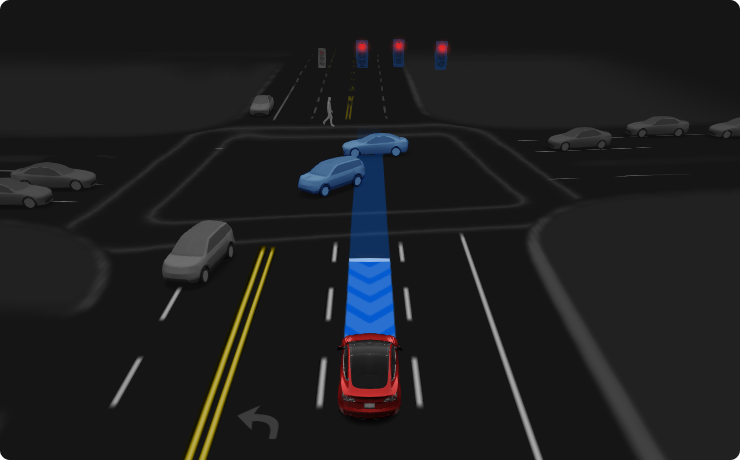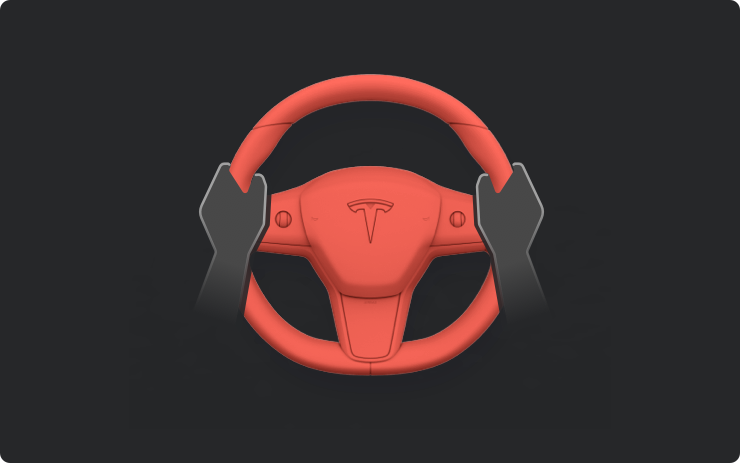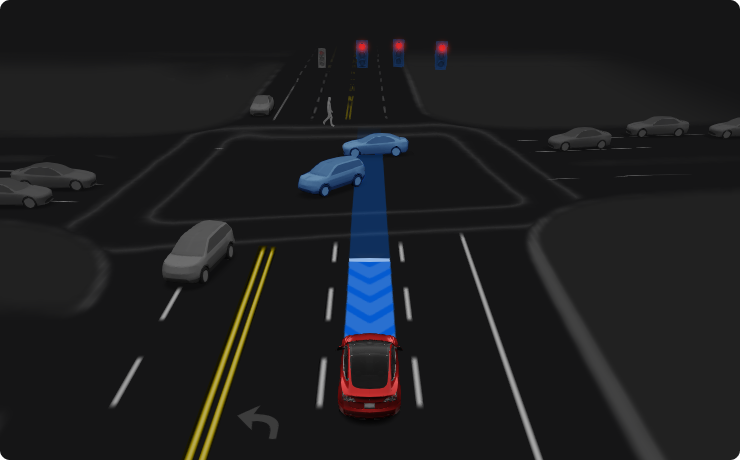Version 2023.7.10
Released May 26, 2023

FSD Beta v11.4.2
Included in 2023.7.10
- Improved control through turns, and smoothness in general, by improving geometry, curvature, position, type and topology of lanes, lines, road edges, and restricted space. Among other improvements, the perception of lanes in city streets improved by 36%, forks improved by 44%, merges improved by 27% and turns improved by 16%, due to a bigger and cleaner training set and updated lane-guidance module.
- Added lane-guidance inputs to the Occupancy Network to improve detections of long-range roadway features, resulting in a 16% reduction in false negative median detections.
- Improved ego's assertiveness for crossing pedestrians in cases where ego can easily and safely cross before the pedestrian.
- Improved motorbike recall by 8% and increased vehicle detection precision to reduce false positive detections. These models also add more robustness to variance in vision frame-rate.
- Reduced interventions caused by other vehicles cutting into ego's lane by 43%. This was accomplished by creating a framework to probabilistically anticipate objects that may cut into ego's lane and proactively offset and/or adjust speed to position ego optimally for these futures.
- Improved cut-in control by reducing lane-centric velocity error by 40-50% for close-by vehicles.
- Improved recall for object partial lane encroachment by 20%, high yaw-rate cut-in by 40%, and cut-out by 26% by using additional features of the lane-change trajectory to improve supervision.
- Reduced highway false slowdowns related to underestimated velocities for faraway objects by adding 68K videos to the training set with improved auto-labeled ground truth.
- Smoothed in-lane offsetting for large vehicles by tuning the amount of lateral jerk allowed for the maneuver.
- Improved lateral control for upcoming high-curvature merges to bias away from the merging lane.

Full Self-Driving (Beta) Suspension
Included in 2023.7.10
For maximum safety and accountability, use of Full Self-Driving (Beta) will be suspended if improper usage is detected. Improper usage is when you, or another driver of your vehicle, receive five ‘Forced Autopilot Disengagements’. A disengagement is when the Autopilot system disengages for the remainder of a trip after the driver receives several audio and visual warnings for inattentiveness. Driver-initiated disengagements do not count as improper usage and are expected from the driver. Keep your hands on the wheel and remain attentive at all times. Use of any hand-held devices while using Autopilot is not allowed.
The FSD Beta feature can only be removed per this suspension method and it will be unavailable for approximately one week.

FSD Beta v11.4.1
Included in 2023.7.5
- Improved control through turns, and smoothness in general, by improving geometry, curvature, position, type and topology of lanes, lines, road edges, and restricted space. Among other improvements, the perception of lanes in city streets improved by 36%, forks improved by 44%, merges improved by 27% and turns improved by 16%, due to a bigger and cleaner training set and updated lane-guidance module.
- Added lane-guidance inputs to the Occupancy Network to improve detections of long-range roadway features, resulting in a 16% reduction in false negative median detections.
- Improved ego's assertiveness for crossing pedestrians in cases where ego can easily and safely cross before the pedestrian.
- Improved motorbike recall by 8% and increased vehicle detection precision to reduce false positive detections. These models also add more robustness to variance in vision frame-rate.
- Reduced interventions caused by other vehicles cutting into ego's lane by 43%. This was accomplished by creating a framework to probabilistically anticipate objects that may cut into ego's lane and proactively offset and/or adjust speed to position ego optimally for these futures.
- Improved cut-in control by reducing lane-centric velocity error by 40-50% for close-by vehicles.
- Improved recall for object partial lane encroachment by 20%, high yaw-rate cut-in by 40%, and cut-out by 26% by using additional features of the lane-change trajectory to improve supervision.
- Reduced highway false slowdowns related to underestimated velocities for faraway objects by adding 68K videos to the training set with improved auto-labeled ground truth.
- Smoothed in-lane offsetting for large vehicles by tuning the amount of lateral jerk allowed for the maneuver.
- Improved lateral control for upcoming high-curvature merges to bias away from the merging lane.